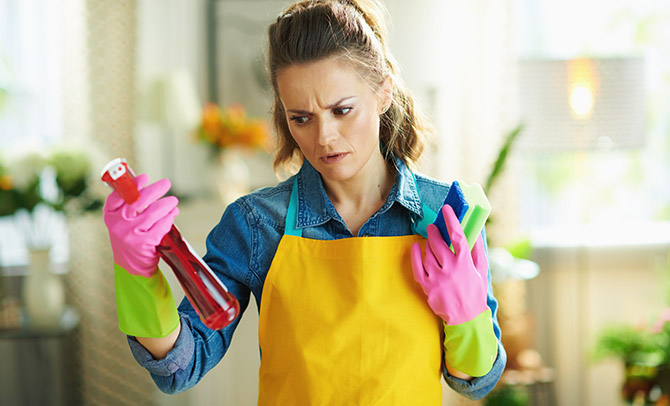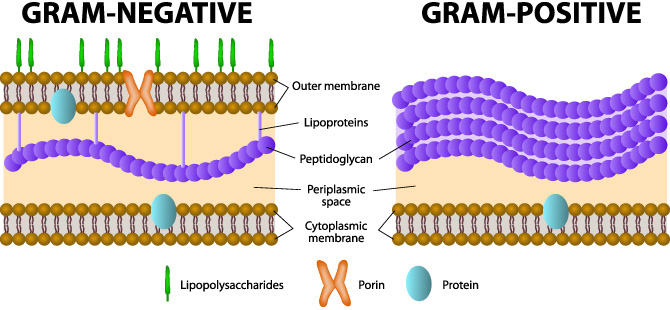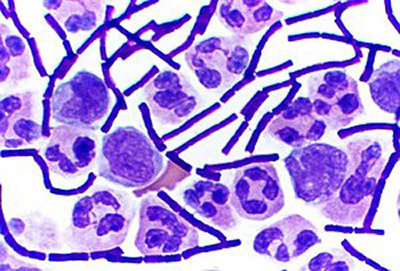
If you read the labels of germ-fighting antibacterial cleaners, you’ve likely seen some interesting terms. One of the most common is “Gram positive”, and it’s used to describe a specific type of bacteria. The description is helpful; as there are anywhere upward of 10,000 types of bacteria out there in the world, and having an easy way to classify them has some major advantages! In this case, let’s take a look at what it actually means for a bacteria to be classified as Gram positive — and, more importantly, how to kill it.
What “Gram Positive” Means
As a classification, Gram positive is useful because it’s one of the two categories that all known bacteria fit into. It should come as no surprise that the other category is known as Gram negative. So it’s clear that if your bacteria isn’t one, it’s the other, but what exactly does it mean to have a Gram positive bacteria?

In a nutshell, it all comes down to how the cell membrane is structured in these different bacteria. Some have a thick layer made up of a mesh of both amino acids and sugars, called peptidoglycan; some do not. Those that do have this thicker cell wall are known as Gram positive, while those that lack it are known as Gram negative. The term itself is named after Hans Christian Gram, the Danish bacteriologist that pioneered a way to test whether there was peptidoglycan present in the cell walls of a specific bacteria or not.
Gram developed a dye that reacted with peptidoglycan, staining it purple whenever it was present and making it stand out when viewed under a microscope. Bacteria without the layer tested negative by not absorbing the stain, thus prompting the terms “Gram positive” and “Gram negative”.
Dealing With Gram Positive Bacteria

Knowing whether a specific bacteria is Gram positive or not is essential, as you can then take specific steps to kill this bacteria using the most effective methods. This is because Gram positive bacteria react differently to the environment than Gram negative ones, and it all comes down to that peptidoglycan outer layer.
While Gram positive bacteria have that thick outer layer, this ironically makes them more susceptible to being killed by antibiotics and sanitizing agents. Peptidoglycan is highly absorbent, making it easier for antimicrobial agents to take care of it. Gram negative bacteria, meanwhile, might have a thinner cell wall, but these bacteria are much less absorbent.
In other words, it’s much easier to use cleansers and sanitizing agents to get rid of harmful Gram positive bacteria than it is to do away with Gram negative bacteria. Thankfully, Gram negative bacteria have other vulnerabilities that their Gram positive counterparts lack; Gram negative bacteria, for instance, cannot survive very long on dry surfaces.
Understanding Effectiveness Against Gram Positive Bacteria

Understanding what Gram positive bacteria is and how it differs from other types of bacteria is an important step in keeping your environment clean and sanitized. Since it can survive on dry surfaces for long periods of time, it’s important to clean those surfaces regularly with a disinfectant that’s effective against these types of bacteria. Doing so can keep your environment safer and more germ-free for everyone. And what is the best cleaning disinfectant? Quats.
Quats, like Emergicide and KennelSol have proven for decades as being excellent for the various disinfection needs of business and animal care facilities, especially when thinking of Gram-positive microorganisms. Gram-positive microbes are unable to mount an adequate defense to the assault Quats place upon their cell membrane and the components inside of these bacteria. In addition, because Quats play well with other chemicals during the formulation process, they can be engineered for a broad range of effectiveness against many different types of microorganisms. They also demonstrate excellent cleaning ability – which accounts for upwards of 90% of one’s success at battling disease transmission.